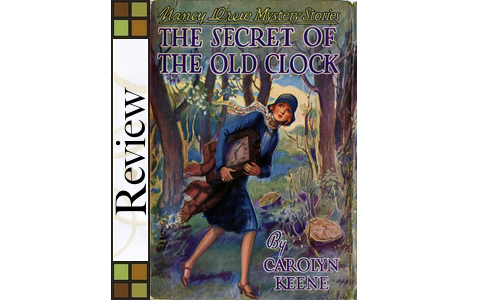Review: The Secret of the Old Clock

To begin with, this is not my usual type of book review. As you can tell from the book cover, this is not a new book. In fact, it was first published almost a hundred years ago, and it was more of a manufacturing product than a literary work.
Nancy Drew, like others before her, was the brainchild of a book packaging entrepreneur named Edward Stratemeyer, who recognized that the growing publishing industry was overlooking a significant customer base: children. In a remarkably short time, he churned out volume after volume in various series, including The Rover Boys (1899), The Bobbsey Twins (1904), and Tom Swift (1910). In 1911, the syndicate shifted its focus to publishing children's mysteries. That change first led to The Hardy Boys and then Nancy Drew (1930).
Titled The Secret of the Old Clock, the first 1930 Nancy Drew book describes her as "a pretty girl of sixteen" with a "curly golden bob" who drove "a shining new blue roadster". She was quick to stick up for others and point out injustices. She was also wealthy and entitled, which allowed her to have this ability at a time when women and minorities were supposed to know their place.
Later in 1959, the Nancy Drew books underwent drastic revisions. While some of the revisions were highly necessary, many of them were unnecessary and altered the character's spirit. Nancy's age was changed to 18, and her hair color was changed to titian. But, worst of all, much of Nancy's spunk was neutralized, and she was presented as a subservient, 1950s male ideal of a young woman.
These were the versions that I read in the early 1970s. I remember having to look up what "titian" was and enjoying her friend George more than Nancy and definitely more than the somewhat fussy Bess (Okay, I was also fascinated that she had a boy's name.)
One thing that stuck me as I re-read the 1959 version of The Secret of the Old Clock is how terse the language and narration were throughout the book. The Drews live in a "large red-brick house" with a "double garage." That's all we get. Nancy and her clothes are constantly described as "attractive." Like the ghost writer was told not to bother checking a thesaurus for another word. "Just spit out words on the page and finish the book!"
The 1930 edition of The Secret of the Old Clock is available on the treasure that is the Internet Archive. I stumbled upon it while researching this review and soon discovered that the 1959 version also introduced a subplot that didn't significantly contribute to the story.
However, the 1991 reissue includes a brand-new introduction by Sara Paretsky, author of the V.I. Warshawski mysteries. She discusses many of the same issues that other writers, such as Bobbie Ann Mason, have pointed out about the Nancy Drew books. Paretsky wraps up her forward by recognizing the strengths of the teen girl detective:
But it’s a wonderful dream, that a girl can get in her blue roadster, steer it down perilous roads, and come home triumphant. Instead of making little girls leave that dream, maybe it’s time we changed their reality. Keeping Nancy Drew alive for them can only help.
It's always interesting to go back and re-read something, and this has to be the longest period between readings for me. 2025-me can find faults and point out inconsistencies, but 1975-me devoured Nancy Drew mysteries, and thanks to her, I became a long-time mystery lover.

The Secret of the Old Clock - 2 lattes out of five

Nancy Drew herself - 5 lattes out of five




Comments ()